TrevorX
Explorer
- Joined
- Mar 10, 2015
- Messages
- 77
EDIT 15 July 2015: Update here.
Hello :)
I've just built my first FreeNAS system and I thought I'd say hi. I wrote the build up and shared it on OCAU as I've been an (inconsistent) member of that community for about 16 years. This is a shorter version, as lots of stuff I wrote over there is really rather redundant here ;)
This is a project I've been planning for years, but have only recently had the cash to go ahead (and a pressing need to solve a problem). I've been running out of storage for a long time, but I haven't had the funds to create (what I consider to be) a good, reliable storage solution until now, so I've been biding my time and reading. Following a recent screwup of Windows that damaged the file system, now it's time to upgrade. Currently I'm running a workstation with a Samsung 850Pro SSD for the OS, with an 8-port Areca RAID controller running 8 1TB HDDs in RAID5. There is no user data stored on the SSD - everything is on the RAID array. I could completely lose the SSD without breaking a sweat - I can have Windows running on a replacement drive in less than an hour if I have to install from scratch (or about 10 minutes restoring from a disk image). The Areca controller scrubs the array against parity data, so I thought I was fairly well protected against common causes of data loss. The size of the HDDs means rebuilding the array doesn't take too long, limiting exposure due to a failed drive. And for a workstation, it's not a bad system (RAID6 would be better, but the original array was set up with five disks and I added three extras later - you can't add a second parity disk without trashing the array and starting from scratch).
What I've come to realise, though, is that keeping data on your PC introduces significant risk. As I mentioned, Windows screwed up for an unknown reason late last year - I booted the PC up and chkdsk popped up to tell me there were errors on the drives. I didn't think too much of it, so allowed it to scan them. About 18 hours later, I was back up and running, but within a few minutes I had noticed a number of 'zero size' files. I told chkdsk to run another thorough scan and left it for another day. When it came back up, most of the files I cared about had been restored, but quite a lot hadn't. Fortunately all my personal data was recently backed up, but I didn't have enough storage for all the movies I had on there; I estimate about 5% was lost. Thorough sector scanning tools were unable to recover more than a handful of photos - no large files were recoverable.
With my business clients' systems I push for full, live data replication between physical boxes (offsite where possible), incremental quarter-hourly backups to internal backup drives and nightly backups to external storage or offsite systems. That's on top of mirrored arrays, of course. I haven't had the luxury of adequate disposable funds to afford 7TB of external backup capacity, so I had to live with the tradeoff of backing up the much smaller amount of data that was truly irreplaceable and relying on the array never failing to keep the movies secure (which can always be ripped again anyway, it's just annoying). The lesson I've had here is that data storage must be separated from the PC - if Windows glitches and it affects the file system, you could have significant data loss, no matter how robustly you design your storage subsystem. Basically I should follow my own advice to clients - pony up the cash to do it right because the risk of data loss is simply unacceptably high otherwise.
I've been following various NAS trends for a few years on the sidelines and have been impressed with how far FreeNAS has come. I'm a Microsoft technology professional, so am very familiar with everything Windows, but ReFS isn't mature enough for my liking (and performance is terrible for 'parity' systems, so you need 100% redundant mirroring to avoid a performance bottleneck) and I want self-healing features such as provided with ZFS (a long time ago I had a faulty drive that caused slow, unnoticeable bit rot which wasn't picked up until long after the drive had been replaced. Backups had copied the bad data too. Fortunately it was nothing I couldn't live without or recreate, but I've never trusted a single HDD with data since). For similar reasons to ReFS, BTRFS is also off the table due to immaturity.
Now I'm new to FreeBSD - in fact, I have very little Linux knowledge or experience generally - what I do know has been garnered from riding shotgun while other professionals do their thing (usually interfacing with Microsoft systems I am somehow involved with). So I am far from an expert in this area!
As to my particular build requirements, I need at least two disks of redundancy, it needs to be highly available and extremely reliable, it needs to be of adequate size for the data I have and at least three years of growth, I want it to be reasonably fast for the use I will put it to, fairly quiet and relatively low power.
So here's my component list:
ASRock C2750D4I Mini-ITX (Avoton Atom C2750)
Lian-Li PC-Q35B case
Crucial 8GB DDR3 ECC 1600MHz 1.35v RAM x4 (32GB)
HGST Deskstar NAS 6TB HDD x6 (RAIDZ2)
WD Caviar Green 6TB (external backup drive)
Transcend SSD370 64GB x2 (OS drives)
Seasonic SS-660XP2 F3 80Plus Platinum 660W PSU
HDD Mobile Rack SATA/SAS 5 x hot-swap drive bays in 3 x 5.25"
Welland EZStor ME-751J Trayless HDD Rack 5.25" Bay for 3.5" SATA
Welland EZStor ME-240 Dual 2.5" SATA mobile rack
Vantec NST-330SU3-BK NexStar 3.5" eSATA external enclosure
Astrotek eSATA PCI-Express card
5.25" to 2.5" bay adapter
You may be wondering what the Caviar Green is doing in there. I'm intending to do partial backups to this as an external drive; I'm not intending to use snapshots of the whole zpool. Instead, I'm going to script rsync to backup and synchronise specific folders (essentially everything other than the Video folder).
And now for some photos (or it didn't happen, right?) Yes, my photos are lame, sorry - don't bother flaming me over them - I don't care :p
Here's the collection of parts:
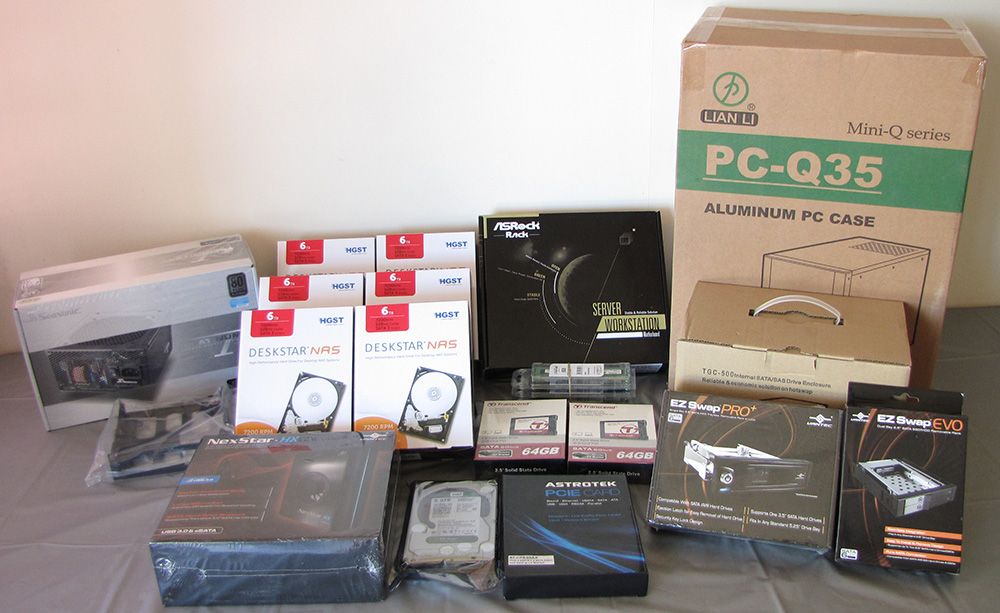
And stripped bare of their packaging:
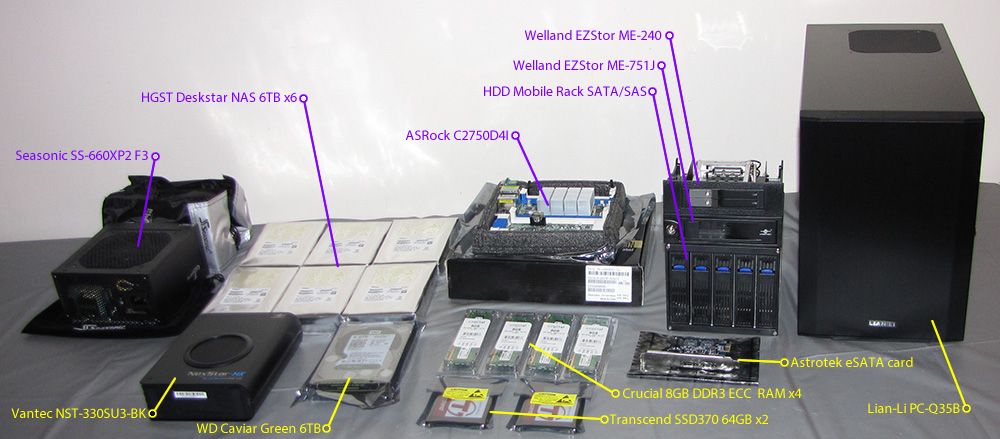
Assembled, but prior to PSU installation:
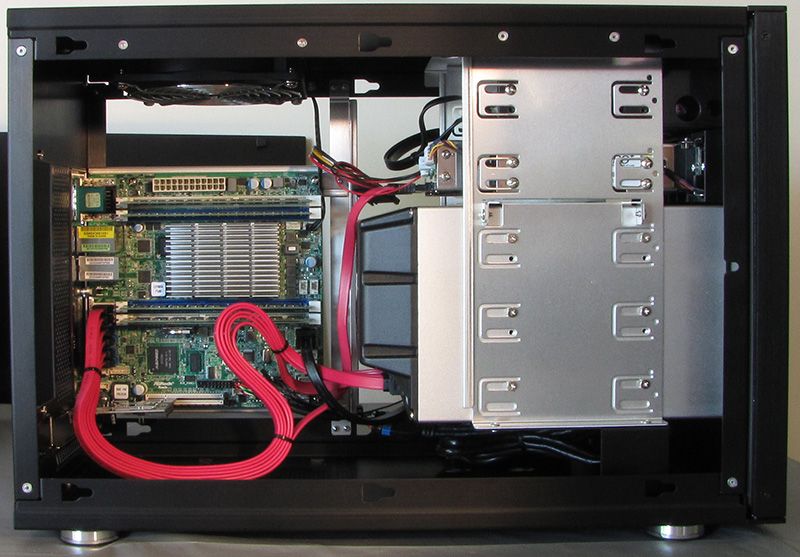
With PSU (not much to see here):
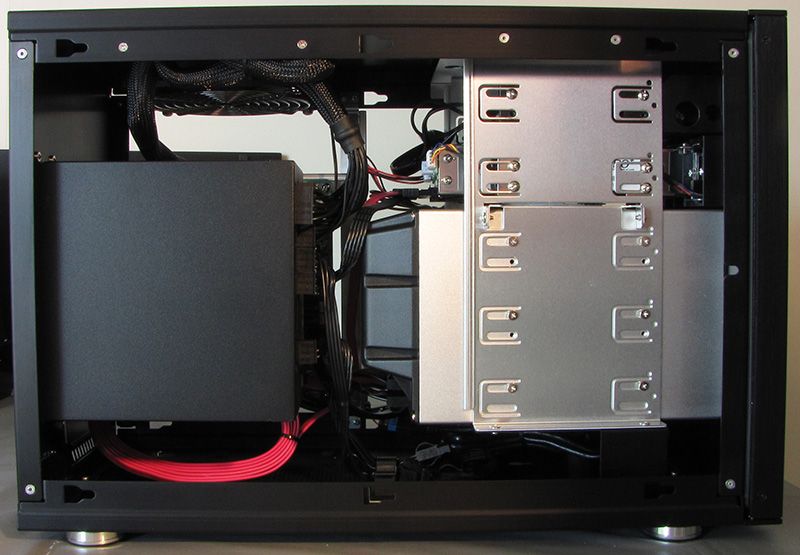
Drives ready to go:
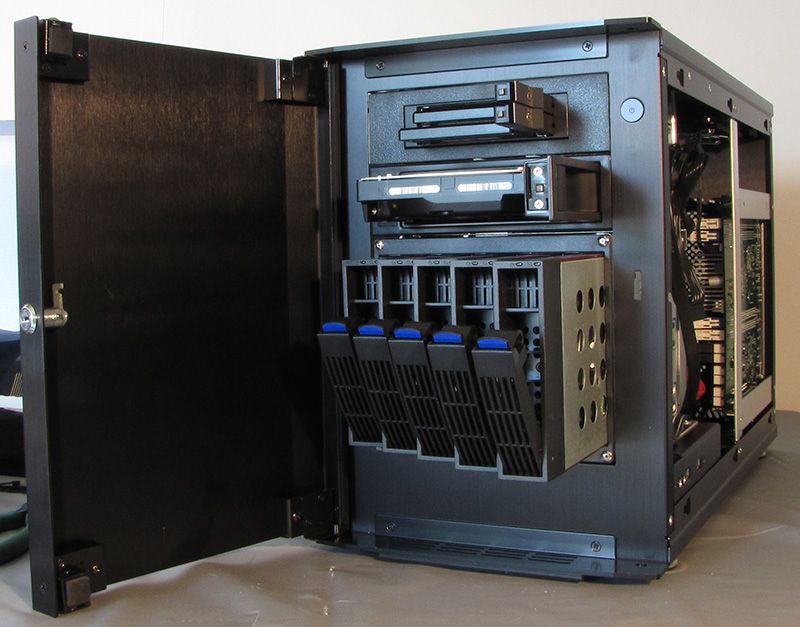
All locked up and ready for action!

Thanks for reading, and building such a fantastic community - I've already learned so much from lurking the past couple of years! Also thanks to Ericloewe, Fraoch, Robert Trevellyan and JoeVulture for your help and suggestions :)
Hello :)
I've just built my first FreeNAS system and I thought I'd say hi. I wrote the build up and shared it on OCAU as I've been an (inconsistent) member of that community for about 16 years. This is a shorter version, as lots of stuff I wrote over there is really rather redundant here ;)
This is a project I've been planning for years, but have only recently had the cash to go ahead (and a pressing need to solve a problem). I've been running out of storage for a long time, but I haven't had the funds to create (what I consider to be) a good, reliable storage solution until now, so I've been biding my time and reading. Following a recent screwup of Windows that damaged the file system, now it's time to upgrade. Currently I'm running a workstation with a Samsung 850Pro SSD for the OS, with an 8-port Areca RAID controller running 8 1TB HDDs in RAID5. There is no user data stored on the SSD - everything is on the RAID array. I could completely lose the SSD without breaking a sweat - I can have Windows running on a replacement drive in less than an hour if I have to install from scratch (or about 10 minutes restoring from a disk image). The Areca controller scrubs the array against parity data, so I thought I was fairly well protected against common causes of data loss. The size of the HDDs means rebuilding the array doesn't take too long, limiting exposure due to a failed drive. And for a workstation, it's not a bad system (RAID6 would be better, but the original array was set up with five disks and I added three extras later - you can't add a second parity disk without trashing the array and starting from scratch).
What I've come to realise, though, is that keeping data on your PC introduces significant risk. As I mentioned, Windows screwed up for an unknown reason late last year - I booted the PC up and chkdsk popped up to tell me there were errors on the drives. I didn't think too much of it, so allowed it to scan them. About 18 hours later, I was back up and running, but within a few minutes I had noticed a number of 'zero size' files. I told chkdsk to run another thorough scan and left it for another day. When it came back up, most of the files I cared about had been restored, but quite a lot hadn't. Fortunately all my personal data was recently backed up, but I didn't have enough storage for all the movies I had on there; I estimate about 5% was lost. Thorough sector scanning tools were unable to recover more than a handful of photos - no large files were recoverable.
With my business clients' systems I push for full, live data replication between physical boxes (offsite where possible), incremental quarter-hourly backups to internal backup drives and nightly backups to external storage or offsite systems. That's on top of mirrored arrays, of course. I haven't had the luxury of adequate disposable funds to afford 7TB of external backup capacity, so I had to live with the tradeoff of backing up the much smaller amount of data that was truly irreplaceable and relying on the array never failing to keep the movies secure (which can always be ripped again anyway, it's just annoying). The lesson I've had here is that data storage must be separated from the PC - if Windows glitches and it affects the file system, you could have significant data loss, no matter how robustly you design your storage subsystem. Basically I should follow my own advice to clients - pony up the cash to do it right because the risk of data loss is simply unacceptably high otherwise.
I've been following various NAS trends for a few years on the sidelines and have been impressed with how far FreeNAS has come. I'm a Microsoft technology professional, so am very familiar with everything Windows, but ReFS isn't mature enough for my liking (and performance is terrible for 'parity' systems, so you need 100% redundant mirroring to avoid a performance bottleneck) and I want self-healing features such as provided with ZFS (a long time ago I had a faulty drive that caused slow, unnoticeable bit rot which wasn't picked up until long after the drive had been replaced. Backups had copied the bad data too. Fortunately it was nothing I couldn't live without or recreate, but I've never trusted a single HDD with data since). For similar reasons to ReFS, BTRFS is also off the table due to immaturity.
Now I'm new to FreeBSD - in fact, I have very little Linux knowledge or experience generally - what I do know has been garnered from riding shotgun while other professionals do their thing (usually interfacing with Microsoft systems I am somehow involved with). So I am far from an expert in this area!
As to my particular build requirements, I need at least two disks of redundancy, it needs to be highly available and extremely reliable, it needs to be of adequate size for the data I have and at least three years of growth, I want it to be reasonably fast for the use I will put it to, fairly quiet and relatively low power.
So here's my component list:
ASRock C2750D4I Mini-ITX (Avoton Atom C2750)
Lian-Li PC-Q35B case
Crucial 8GB DDR3 ECC 1600MHz 1.35v RAM x4 (32GB)
HGST Deskstar NAS 6TB HDD x6 (RAIDZ2)
WD Caviar Green 6TB (external backup drive)
Transcend SSD370 64GB x2 (OS drives)
Seasonic SS-660XP2 F3 80Plus Platinum 660W PSU
HDD Mobile Rack SATA/SAS 5 x hot-swap drive bays in 3 x 5.25"
Welland EZStor ME-751J Trayless HDD Rack 5.25" Bay for 3.5" SATA
Welland EZStor ME-240 Dual 2.5" SATA mobile rack
Vantec NST-330SU3-BK NexStar 3.5" eSATA external enclosure
Astrotek eSATA PCI-Express card
5.25" to 2.5" bay adapter
You may be wondering what the Caviar Green is doing in there. I'm intending to do partial backups to this as an external drive; I'm not intending to use snapshots of the whole zpool. Instead, I'm going to script rsync to backup and synchronise specific folders (essentially everything other than the Video folder).
And now for some photos (or it didn't happen, right?) Yes, my photos are lame, sorry - don't bother flaming me over them - I don't care :p
Here's the collection of parts:
And stripped bare of their packaging:
Assembled, but prior to PSU installation:
With PSU (not much to see here):
Drives ready to go:
All locked up and ready for action!
Thanks for reading, and building such a fantastic community - I've already learned so much from lurking the past couple of years! Also thanks to Ericloewe, Fraoch, Robert Trevellyan and JoeVulture for your help and suggestions :)
Last edited:
